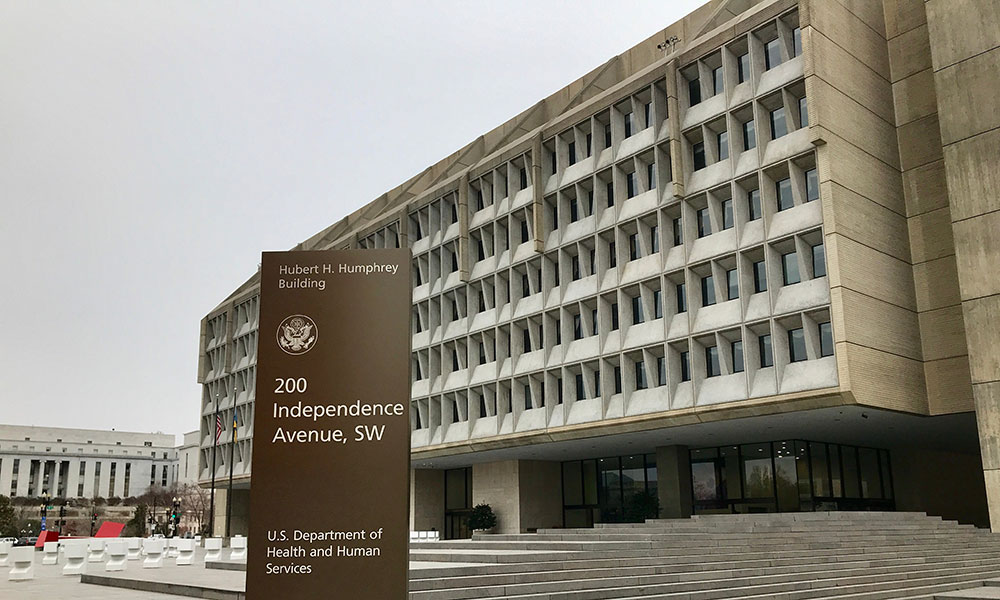Editor’s Note: This perspective was originally published in Health Affairs Forefront on June 2, 2025.
This article is the latest in the Health Affairs Forefront featured topic, “Health Policy at a Crossroads,” produced with the support of the Commonwealth Fund and the Robert Wood Johnson Foundation. Articles in this topic offer timely analyses of regulatory, legislative, and judicial developments in health policy under the Trump-Vance Administration and the 119th Congress.
On March 27, 2025, Health and Human Services (HHS) Secretary Robert Kennedy, Jr. announced a dramatic reorganization, of and staff reduction to, one of the nation’s largest cabinet agencies. He announced that, through a series of reductions in force and other separations and retirements, the HHS’ workforce would be reduced by nearly 25 percent, from 82,000 to 62,000 full-time employees. No major operating division of HHS was left untouched, including the Centers for Medicare and Medicaid Services (CMS). Although CMS will experience fewer announced staff reductions than other major HHS operating divisions, hiring freezes combined with future staff separations and retirements will continue to erode its workforce.
As a result of these changes, CMS will have fewer staff on board than it did in 2015, despite overseeing a budget almost twice as large, serving millions more people, and dealing with significant new responsibilities. To provide some context, in 2015, CMS had about 6,000 staff, overseeing a total budget of $0.9 trillion and providing and financing coverage for 54 million Medicare beneficiaries, 78 million Medicaid & Children’s Health Insurance Program (CHIP) enrollees, and 12 million consumers covered by the Affordable Care Act’s federal and state Marketplace insurance exchanges. By comparison, in 2024, CMS had 6,600 staff, overseeing a total budget of nearly $1.5 trillion and covering 67 million Medicare beneficiaries, 89 million Medicaid & CHIP enrollees, and 24 million Marketplace consumers. CMS’s resources were not keeping pace with its rapidly growing program and budget responsibilities before Secretary Kennedy’s reductions. (CMS staffing numbers from Fedscope, Office of Personnel Management. CMS budget numbers from HHS 2015 Budget in Brief and HHS 2024 Budget in Brief. CMS program enrollment from National Health Expenditure Data, CMS, and Marketplace Enrollment, 2014-2025, KFF.)
Dedicated Funding For Newer CMS Functions, Neglect For Other Vital Agency Responsibilities
Today, the agency receives dedicated appropriations or user fees for its relatively new functions: administering the Marketplaces, the Center for Medicare and Medicaid Innovation (CMMI), and Medicare drug price negotiations. Congress has provided dedicated funding for many of CMS’s fraud and abuse activities. The remaining two-thirds of the agency is funded through general appropriations, competing for funding with other federal government priorities. Consequently, while newer parts of CMS are fully funded, many vital agency functions do not have needed resources; the critical systems and staff teams that administer the Medicare and Medicaid systems have atrophied. Congress can say it has added net new resources to CMS over the past 10 years, but it has funded the agency in a way that has harmed critical functions and prevented agencywide, sustained investments in modern information technology systems and human capital. In contrast, Congress could allocate funding to CMS as a single line item that would enable the agency to invest in systemwide modernization, benefitting all of the agency’s critical programs rather than just those with dedicated funding.
In addition to overall enrollment increases, the Medicare and Medicaid programs have undergone rapid change in the delivery of their services. They have shifted from mostly fee-for-service payments to payments increasingly administered by third-party health plan organizations. Once an agency built primarily to administer the fee-for-service, or “traditional” Medicare, CMS is now charged with regulating federal and state health insurance markets, facilitating enrollment into high-quality health plan products, and ensuring that quality improvements and cost-containment priorities are carried out by for-profit and non-profit health plans.
CMS administers critical functions that support the nation’s entire health system, including guaranteeing the safety of hospitals and nursing homes, setting the coding and data standards for health care transactions, and setting national reimbursement standards that are used by other payers. In recent years, CMS has set industry standards for how to control waste, fraud and abuse; defined national payment reform strategies through its Center for Medicare and Medicaid Innovation; and established coverage criteria for new technologies that many other payers follow.
CMS has also demonstrated its critical role in responding to public health and economic disasters, such as the COVID-19 pandemic and recent cyber-attacks on the health sector. During such disasters, the agency has rapidly expanded coverage for the millions who lost employer-sponsored coverage; facilitated the health care system’s pivot to new models of care, such as telemedicine; and injected billions of dollars of temporary liquidity into the health system to keep critical providers afloat.
CMS has had to adapt to rapid advances in new technologies and care delivery models. The agency was originally built to pay for health care services in traditional health care settings, such as hospitals and physician offices. Medicare only began to pay for retail prescription drugs in 2006. CMS will continue to be challenged to set coverage and reimbursement policies for novel diagnostic and therapeutic services, and for services increasingly delivered in settings other than a hospital or a physician office.
Secretary Kennedy’s stated objective for this reorganization and staff reduction is to reduce bureaucratic inefficiencies, redundancies, and waste. He argues that his actions will improve services and the effectiveness of HHS’s programs. For this to be true, CMS’s operational productivity will need to dramatically increase through improvements in its organizational design and increases in knowledge. If operational efficiency is not improved and new staff with critically important skills are not hired back into the agency, CMS’s multi-faceted missions will be severely compromised.
Agency leaders will need to quickly decide how to implement Secretary Kennedy’s reorganization of the agency to improve the economy of its programs. They will also need to decide what skill sets should be recruited into the agency once hiring resumes in earnest. Its next organization and hiring decisions must ensure that CMS is able to meet both the current demands of its programs and responsibilities and its future demands.
Decisions On CMS’ Future Organizational Design
To effectively reorganize the agency, three key decisions will need to be made:
Question 1: Should CMS continue to rely on private contractors to perform its most critical work, or should the agency in-source these functions?
Today, much, if not most, of CMS’s work is carried out by private contractors. In 2024, CMS employed 6,600 staff, in contrast to the over 40,000 people employed by companies that contracted with the agency. Contractors today perform vital CMS services and administrative functions, oftentimes at industry-leading benchmarks. However, too-heavy reliance on contractors prevents CMS from developing internal expertise to conduct rapid-cycle program evaluation, decision making, and policy development. Further, reliance on contractors requires significant resources to manage and oversee their work, as well as the necessary technical skills and business knowledge to identify the best contractors and ensure alignment with business and policy goals.
Question 2: Should CMS continue to be organized as a holding company of separate business lines or build stronger enterprise capabilities that extend across multiple programs?
Today, CMS is largely organized around its three primary business functions: Medicare, Medicaid, and the Marketplaces. These programs operate in largely separate staffing silos: Information-technology, hiring decisions, and contractor oversight are largely maintained within each individual component.
This siloed organization promotes operational accountability of legally required activities, but it can result in redundancy of expertise and operational systems; for example, multiple teams today develop and implement risk adjustment programs. The silos can also hinder efforts to integrate and coordinate critical CMS business lines—such as program integrity, quality improvement, and new payment models—across the three programs and the entire health system.
Question 3: Should CMS be organized to first and foremost maximize the efficiency of its program requirements, or to maximize activities that improve all US health insurance and health system programs?
If CMS leaders believe the agency’s primary purpose is to maximize the efficiency of its three primary insurance programs, it will allocate resources to those areas of the agency that have the greatest spending demands, public attention, and/or risk of failure. If, instead, agency leaders see the agency’s mission as improving the entire health system, they will make organizational and budget decisions that not only improve the effectiveness of CMS’s core insurance programs but the effectiveness of all private health insurance and health systems throughout the country. As a maximizer of such “public goods,” CMS would make even greater investments setting priorities for health system redesign through novel payment development; assuring safety and quality of hospitals, nursing homes, and other health care facilities; establishing cyber security standards to protect financial and data transactions systems; and promoting systemwide data exchange and interoperability standards to reduce system-wide burden.
CMS’s Human Capital Needs
Overseeing Medicare, Medicaid, And The Marketplaces
First, CMS’s workforce of the future must be structured to respond to CMS’s growing mission to oversee local health insurance markets for Medicare, Medicaid, and Marketplace enrollees. This work has three necessary components: 1) establishing accurate rate setting and risk-adjustment mechanisms; 2) helping individuals and families enroll in coverage and simplifying the choice process in selecting coverage; and 3) ensuring that states and health plans are accountable for improving the quality and experience of care and reducing the total cost of care. The agency will need to build greater expertise in ensuring that managed care plans compete on the value of services and improving the consumer choice process from one of fear and reliance on third-party agents and brokers to one of consumer confidence in their plan selection, especially as consumers migrate from one insurance program to another.
Building Cross-Program Expertise
Second, rather than concentrating on expertise in any one program area, CMS’s future employees will need to build expertise in general health insurance and delivery system knowledge to create a policy and operational framework of smooth coverage transitions. An individual or family should be able to seamlessly migrate from Medicaid coverage to Marketplace coverage when they lose Medicaid eligibility. They should be able to seamlessly transition from Marketplace coverage to Medicare coverage when they turn age 65 or become disabled.
For these seamless transitions to occur, CMS will need to ensure that individual’s and families’ health care teams and care plans remain intact even if their health insurance program changes. This requires developing stronger interoperable data standards and systems that promote information sharing among programs and health plans; it requires oversight of provider networks and other managed care policies to promote seamless coverage transitions.
Strengthening Payment Systems And Evaluation
Third, CMS’s reimbursement and coverage teams will need to increasingly address novel gene and cell therapies, as well as artificial intelligence-enabled medical devices, diagnostics and therapeutics, and care models that deliver more services and procedures in a non-hospital or home setting. CMS staff will have to evaluate whether these technologies are reasonable and necessary; they will have to establish durable and nimble reimbursement methodologies that provide greater predictability to technology innovators.
Though enrollment in traditional Medicare will likely continue to shrink as a proportion of Medicare enrollees, CMS must continue to make sustained investments to modernize its fee-for-service Medicare payment systems. These systems will continue to provide the primary coverage and fee-setting benchmarks for Medicare Advantage and alternative payment models such as Accountable Care Organizations. But over the past several years, CMS has not had the resources to make investments in its Medicare payment systems.
Additionally, as CMS expands its role in negotiating Medicare prescription drug prices, agency staff will have to continue to develop expertise in the evaluation and pricing of pharmaceuticals.
Learning And Evaluating
Fourth, the CMS of the future must continue to build strong systems of learning and evaluation to ensure its policies improve access to care, improve the quality of that care, and reduce costs. CMS maintains the best available data sets on health spending, the performance of the health care economy, and the impact of financial incentives on care. The agency will need best-in-class data analysts to measure the impacts—intended and unintended—of its policies on its programs and on health systems throughout the country. CMS staff should be able to design and build the agency’s information technology systems to support agile, robust, real-time decision-making.
Conclusion: Building a Stronger Coalition For A Comprehensive CMS Vision
Those of us who have spent time working at or around CMS are saddened by the recent loss of beloved staff and impossible-to-replace institutional knowledge. In the short term, it is unlikely that Secretary Kennedy’s decisions will be reversed or modified. But whether we work to implement these decisions or wait for a future Administration to modify his directed course, we all need to contribute to thoughtful discussions of how the agency should be rebuilt for the future. If not, CMS’s critical functions will atrophy, harming the millions covered by it programs and the many health care organizations dependent on its funding.
CMS’s transformation will not happen quickly. This work will span multiple administrations; it will require answering critically important questions regarding how CMS should be organized and what human capital skills it will need. The CMS of the future will have to organize health insurance coverage for millions more people and pay for care that is rapidly changing and becoming more technologically complex. The CMS of the future will also need to recognize that its decisions and infrastructure more than ever form the underpinnings of the entire health care financing and delivery system.
Author’s Note
I am a Nonresident Senior Scholar of the USC Schaffer Institute and did not receive funding for this article. I am also a cofounder of Health Transformation Strategies, which consults for a wide array of organizations.
Blum, J. (2025). A Vision For Rebuilding CMS. Health Affairs Forefront.
DOI: https://doi.org/10.1377/forefront.20250530.882978
Copyright © [2025] Health Affairs by Project HOPE – The People-to-People Health Foundation, Inc.




